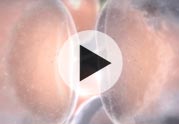Chemotherapy (chemo) is also often used to treat these types of cancer:
- Brain and Spinal Cord Cancer
- Childhood Cancers
- Colorectal Cancer
- Esophageal Cancer
- Leukemia
- Multiple Myeloma
- Pancreatic Cancer
- Prostate and Testicular Cancer
- Uterine Cancer
Brain and Spinal Cord Cancer
The brain and spinal cord make up the central nervous system. Brain cancer is the growth of abnormal cells in the tissue of the brain. Brain tumors can be benign (not cancer) or malignant (cancer). In 2016, about 24,000 new cases of brain and nervous system cancers are expected to be diagnosed in the United States. There are many different types of brain tumors and many different methods for treating them. Brain and spinal cord tumors do not usually spread to other organs.
Brain Cancer Resources
Childhood Cancers
Cancer in children between ages 0 and 14 is rare. Less than 1% of new cancer cases in the United States are found in children. The most common types of cancers in children are:
- Brain and other nervous system cancers
- Leukemia, which accounts for one-third of all childhood cancers.
In 2016, an estimated 10,000 children are expected to be diagnosed with cancer in the United States.
Childhood Cancer Resources
- American Childhood Cancer Organization
- Children's Brain Tumor Foundation
- CureSearch
- St. Jude Children's Research Hospital
- The Ronald McDonald House Charities
Colorectal Cancer
The colon is the longest part of the large intestine. The rectum is the last several inches of the colon, just above the anal canal and anus. Colorectal cancer starts in the tissue cells of the colon or rectum. About 95,000 new cases of colon cancer and an estimated 39,000 cases of rectal cancer are expected to be diagnosed in the United States in 2016. Treatment depends on location of the tumor in the colon or rectum and the stage of the disease.
Colorectal Cancer Resources
Esophageal Cancer
The esophagus is a muscular tube that food passes through as it moves from the throat to the stomach. There are 2 types of esophageal cancer. Cancer that is usually found in the upper part of the esophagus is called squamous cell carcinoma. Cancer that is usually found in the lower part of the esophagus, near the stomach, is called adenocarcinoma. In 2016, an estimated 17,000 cases of esophageal cancer are expected to be diagnosed in the United States.
Esophageal Cancer Resources
Leukemia
Leukemia is cancer that starts in the bone marrow. This is where blood cells are formed. In leukemia, the bone marrow produces abnormal white blood cells, which do not die when they should, like normal blood cells do. Leukemia can affect different types of cells (lymphoid cells or myeloid cells). Leukemia can become worse slowly (chronic) or rapidly (acute). In 2016, an estimated 60,000 new cases of leukemia are expected to be diagnosed in the United States.
Leukemia Resources
Multiple Myeloma
Multiple myeloma is a type of cancer in which abnormal plasma cells build in the bone marrow. The buildup of these abnormal cells makes it difficult for the marrow to create healthy blood cells. In 2016, about 30,000 people in the United States are expected to be diagnosed with multiple myeloma.
Myeloma Resources
Pancreatic Cancer
Pancreatic cancer is a disease in which malignant cells are found in the tissue of the pancreas. In 2016, about 53,000 new cases of pancreatic cancer are expected to be diagnosed in the United States. Treatment is based on tumor size and disease spread. Options may include surgery, chemotherapy, biologic therapy, and radiation therapy.
Pancreatic Cancer Resources
Prostate and Testicular Cancer
The prostate is a gland in the male reproductive system. It is located below the bladder and in front of the rectum. Prostate cancer occurs typically in men over 65. In 2016, more than 181,000 new cases of prostate cancer are expected to be diagnosed in the United States.
The male testicles are 2 egg-shaped glands inside the scrotum. These glands make sperm and the hormone testosterone. Testicular cancer is cancer that forms in the cells of the testicles.
Testicular cancer is the most common type of cancer in men 20 to 35 years old. In 2016, approximately 8,700 cases of testicular cancer are expected to be diagnosed in men of all ages.
Prostate and Testicular Cancer Resources
- Prostate Cancer Foundation
- Testicular Cancer Resource Center
- Us-TOO
- ZERO - The End of Prostate Cancer
Uterine Cancer
The uterus is the small, hollow, pear-shaped organ in the female pelvis. It is where a fetus develops during pregnancy. Cancer starting in the cells lining the uterus is called endometrial cancer. Nearly all uterine cancers are this type of cancer. When cancer begins in the muscle or other tissues in the uterus, it is called uterine sarcoma. An estimated 60,000 cases of endometrial cancer are expected to be diagnosed in the United States in 2016.
Uterine Cancer Resources
Chemo Can Cause Side Effects
Chemo stops or slows the growth of cancer cells. Often, cancer cells are fast growing. But chemo also damages healthy cells that divide quickly. These healthy cells can include cells in the bone marrow that make blood and cells in the lining of the gut and mouth, and hair cells. Damage to healthy cells is what causes many chemo side effects. Here's how it works:
- When chemo damages healthy blood cells, the result can be:
- anemia (low red blood cells), which could make you feel extremely weak or tired
- neutropenia (low white blood cells), which could leave you open to infection
- thrombocytopenia (low platelets), which may cause bruising or bleeding
- Chemo may damage healthy cells in the stomach. The chemo medications then irritate these areas, which could result in nausea and vomiting. Chemo medications may also trigger signals in the brain that tell your body to vomit.
- When chemo affects healthy cells surrounding hair follicles, the result can be hair loss. Hair loss is also known as alopecia.
Chemo can cause many other side effects, but the good news is that there may be ways to manage them.
Learn more about chemo side effects and how to manage them.
Make sure to speak with your doctor and care team to plan for managing chemo side effects.
Check out these questions to help you prepare.
-
The Chemotherapy and Infection Discussion Guide can help you understand your
risk of infectionInfection can be a serious side effect of strong chemo. Find out the factors that affect your risk of infection. Simply answer a few questions, and then print your results to share with your doctor.
Use the Chemotherapy and Infection Discussion Guide to find out more.

 Enlarge
Enlarge Email
Email Print
Print
